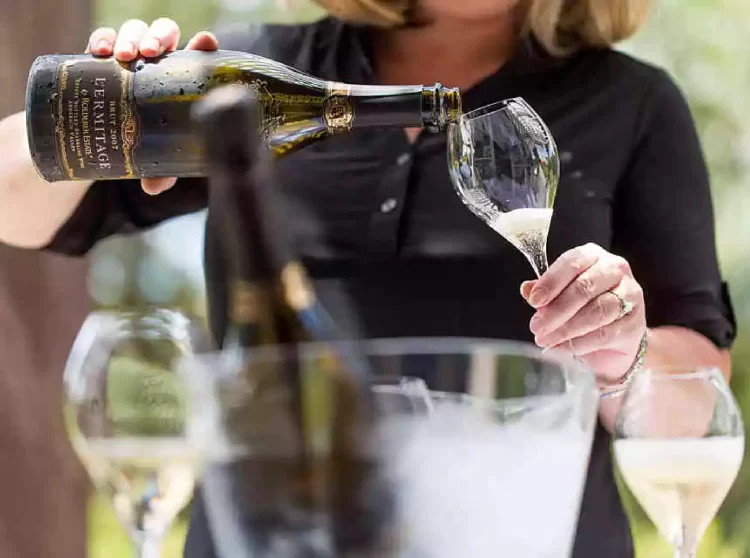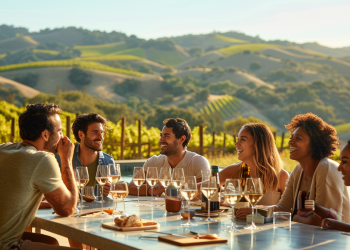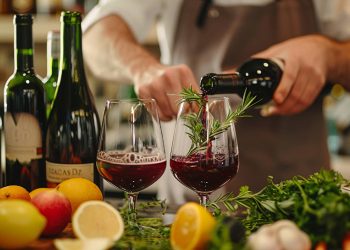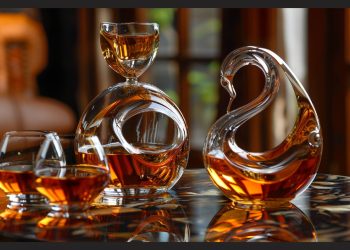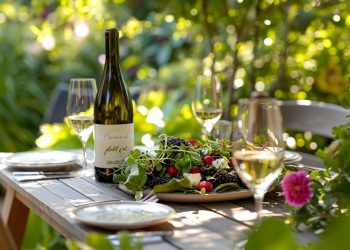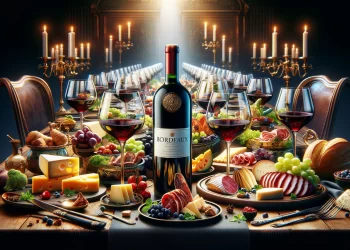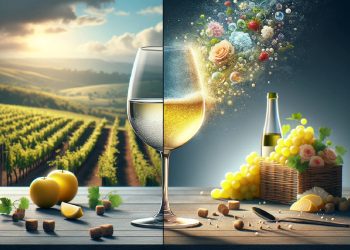Roederer Estate Brut is a sparkling wine that embodies the essence of tradition, craftsmanship, and refinement. Produced by the renowned Champagne house Louis Roederer, it is a testament to their unwavering commitment to excellence and their dedication to creating wines of exceptional quality.
Nestled in the cool climate of California’s Anderson Valley, Roederer Estate benefits from the ideal terroir that imparts unique characteristics to its grapes. The use of traditional grape varieties, combined with the meticulous attention to detail in the production process, results in a sparkling wine that captivates both the palate and the senses.
With a delicate balance of flavors and aromas, Roederer Estate Brut offers a harmonious experience with every sip. It is a versatile wine that pairs effortlessly with a wide range of culinary delights, making it a perfect choice for those seeking a sense of belonging and indulgence. Experience the allure of Roederer Estate Brut and discover a world of elegance and sophistication.
Key Learnings About Roederer Estate Brut
- Roederer Estate Brut is a premier sparkling wine producer in the Anderson Valley of Mendocino County, California.
- The vineyard benefits from a cool climate region with coastal influence, resulting in cool temperatures and fog that moderate the temperature and create the ideal conditions for grape development.
- The vineyard’s well-drained soils are composed of gravel and loam, and its perfect balance of temperature, sunlight, and fog cover contributes to the wines’ complexity and depth of flavors.
- The favorable vineyard location, climate, meticulous vineyard management practices, and traditional winemaking techniques result in high-quality grapes that produce refined, elegant, and terroir-driven sparkling wines.
History and Legacy
The history and legacy of Roederer Estate Brut can be traced back to its founding in the early 1980s. Situated in the Anderson Valley of Mendocino County, California, Roederer Estate has established itself as a premier producer of sparkling wines. A key factor in their success lies in their meticulous vineyard management practices. The estate carefully tends to its vineyards, ensuring optimal grape quality and flavor development. From pruning to canopy management, every step is taken to create the perfect growing conditions.
Additionally, Roederer Estate embraces traditional winemaking techniques to craft its sparkling wines. The grapes are gently pressed, and the juice is fermented in stainless steel tanks before undergoing a second fermentation in the bottle. This labor-intensive process produces elegant, complex wines with fine bubbles and vibrant flavors. The commitment to excellence in vineyard management and winemaking techniques has solidified Roederer Estate’s legacy as a producer of exceptional sparkling wines.
Vineyard Location and Climate
The vineyard location and climate play a crucial role in the production of Roederer Estate Brut. The ideal microclimate, with cool temperatures and coastal influence, provides optimal growing conditions for the grapes. The unique combination of soil and terroir in the Anderson Valley further contributes to the quality and character of the grapes, ultimately impacting the flavor profile of this renowned sparkling wine.
Ideal Vineyard Microclimate
An optimal vineyard microclimate for Roederer Estate Brut requires a specific combination of temperature, rainfall, and soil conditions. The vineyard management at Roederer Estate places great importance on sustainability practices, ensuring that the vineyard is in harmony with its natural surroundings. Located in the cool-climate region of Anderson Valley in California, the vineyard benefits from the coastal influence, with cool breezes and fog that help moderate the temperature. The combination of warm days and cool nights is essential for the development of the grapes’ flavors and acidity.
The region also receives moderate rainfall, which is crucial for the vines’ water needs but not excessive enough to cause waterlogging. Additionally, the well-drained soils, predominantly composed of gravel and loam, provide the necessary drainage and nutrient retention for the vineyard’s health. This carefully curated microclimate ensures that the grapes used to produce Roederer Estate Brut are of the highest quality, resulting in an elegant and expressive sparkling wine.
Soil and Terroir
Located in the cool-climate region of Anderson Valley in California, Roederer Estate Brut benefits from a carefully curated microclimate that includes optimal soil composition and vineyard location. The soil composition in this region, characterized by gravelly loam and clay, provides excellent drainage and water retention capabilities. This allows the grapevines to access the necessary nutrients while preventing excessive water accumulation that could harm their growth. The unique combination of soil types also contributes to the complexity and depth of flavors in the resulting wines.
Additionally, the vineyard location in the Anderson Valley offers a perfect balance of temperature, sunlight, and fog cover, which is crucial for grapevine nutrition and flavor development. The cool climate and coastal influence create a longer growing season, allowing the grapes to ripen slowly and retain their natural acidity, resulting in vibrant and well-balanced wines.
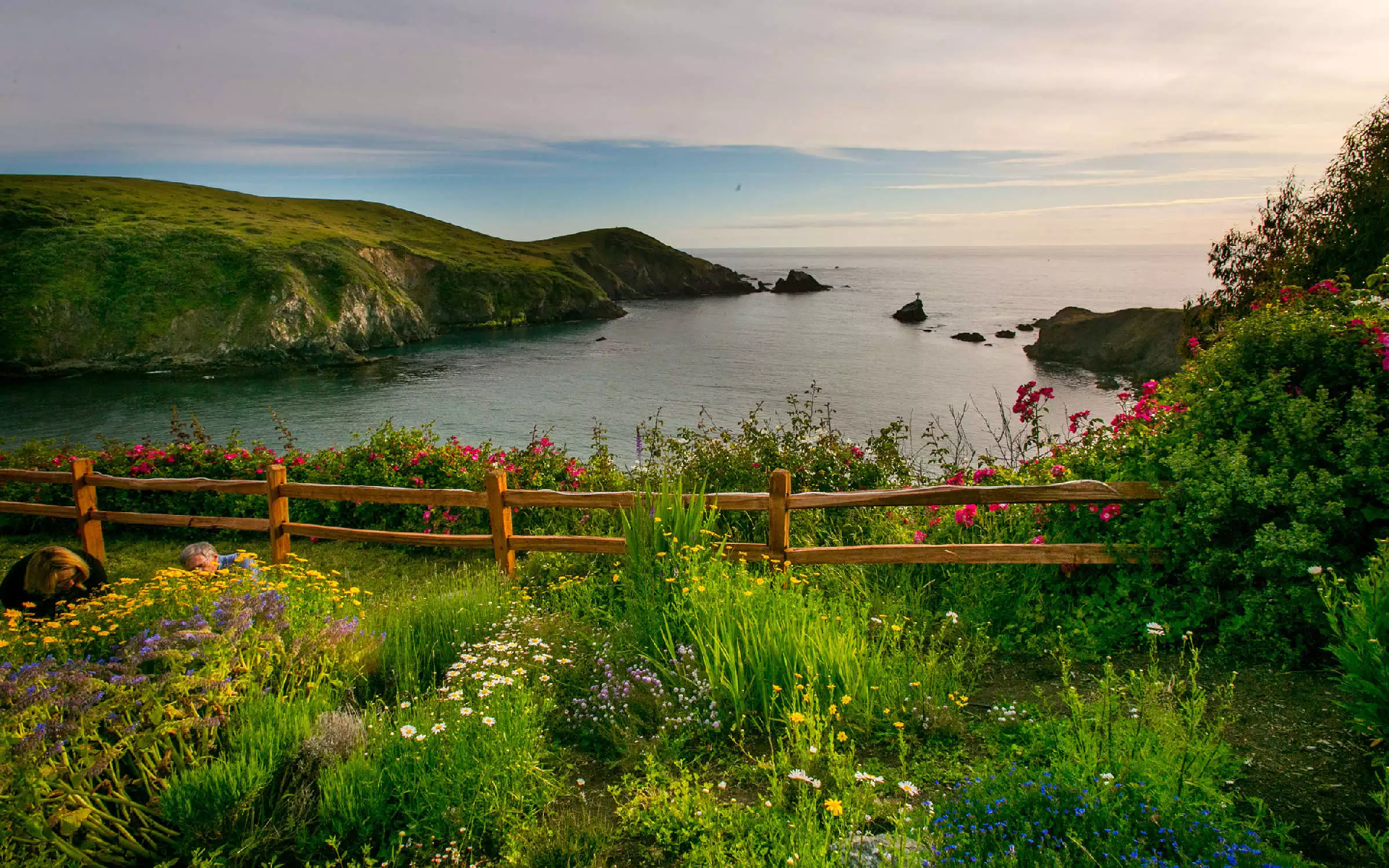
Impact on Grape Quality
Roederer Estate Brut owes its exceptional grape quality to the favorable vineyard location and climate. Situated in Anderson Valley, California, the vineyards benefit from a unique combination of factors that contribute to the production of high-quality grapes. The cool coastal climate, influenced by the Pacific Ocean, provides ideal conditions for growing Chardonnay and Pinot Noir, the two primary grape varieties used in Roederer Estate Brut. The cool temperatures and foggy mornings help to retain the grapes’ natural acidity and delicate flavors, resulting in a crisp and refreshing sparkling wine.
Furthermore, the diverse soil types, including clay, loam, and gravel, offer different drainage capacities and mineral compositions, adding complexity to the grapes’ character. This exceptional grape quality has significantly impacted the wine market, with consumers increasingly seeking wines that reflect their preferences for refined, elegant, and terroir-driven sparkling wines.
Sip, savor, soar: Where knowledge and elegance harmonize. For more about the exquisite world of wines, visit Encyclopedia Wines.
Grape Varieties Used
The grape varieties utilized in the production of Roederer Estate Brut consist of a carefully selected combination of Chardonnay, Pinot Noir, and Pinot Meunier. These grape varieties are known for their unique characteristics that contribute to the complexity and balance of the final wine.
- Chardonnay: This grape variety brings elegance and finesse to the blend with its citrus and apple flavors and vibrant acidity.
- Pinot Noir: Known for its red berry and cherry notes, Pinot Noir adds depth and structure to the wine while also providing a touch of richness.
- Pinot Meunier: This grape variety adds a layer of fruitiness and roundness to the blend with its ripe plum and strawberry flavors.
Traditional Method of Production
The traditional production method is a meticulous and time-consuming process used to create high-quality sparkling wine. This method involves a second fermentation in the bottle, where the wine is aged on its lees to develop complex flavors and aromas. The aging process allows the wine to develop richness and depth, resulting in a refined and elegant final product.
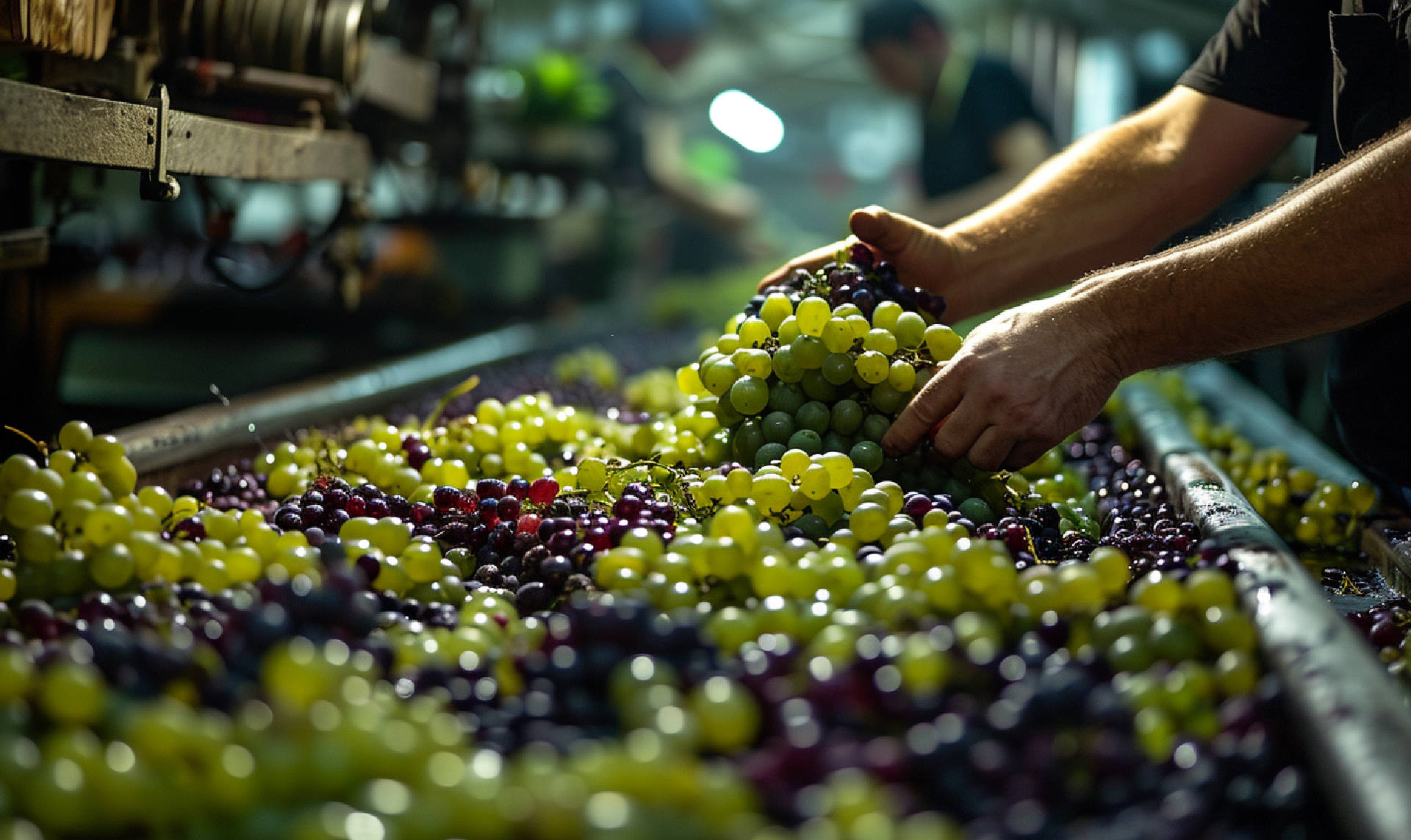
Champagne Making Process
The traditional method of production for champagne involves a meticulous and time-intensive process. It is this process that gives champagne its unique and exquisite taste. Here are the steps involved in the champagne-making process:
- Champagne Fermentation: The base wine is made by fermenting grape juice, which is then blended with a mixture of sugar and yeast to initiate a second fermentation. This creates the bubbles that are characteristic of sparkling wines.
- Aging: Once the second fermentation is complete, the wine is aged in bottles, allowing it to develop complex flavors and aromas. This aging process can last anywhere from 15 months to several years.
- Riddling and Disgorgement: After aging, the bottles are gradually rotated and tilted, a process known as riddling, to collect the sediment in the neck. The neck is then frozen, and the sediment is expelled through disgorgement.
The traditional method of champagne production is labor-intensive, but it is this dedication to craftsmanship that ensures the exceptional quality of each bottle.
Quality of Sparkling Wine
To evaluate the quality of sparkling wine produced using the traditional method, one must consider various factors such as grape selection, fermentation, aging, and disgorgement techniques. Vineyard management plays a crucial role in ensuring the quality of the grapes used for sparkling wine production. The choice of grape variety, ripeness levels, and even the specific vineyard site can greatly impact the final product.
Additionally, production techniques such as gentle pressing, temperature control during fermentation, and extended lees aging contribute to the complexity and character of the wine. The traditional method also involves the process of disgorgement, where the sediment from secondary fermentation is removed. This step requires precision and skill to maintain the wine’s clarity and effervescence. The combination of meticulous vineyard management and precise production techniques is essential for producing high-quality sparkling wine.
Aging and Flavor Development
Continuing the discussion from the previous subtopic, an integral aspect of the traditional method of production for sparkling wine is the aging process, which significantly contributes to the development of flavors. Aging techniques play a crucial role in enhancing the quality of the wine and creating a distinctive character that wine enthusiasts seek. Here are three ways in which aging impacts the flavor development of sparkling wine:
- Autolysis: During the aging process, the wine interacts with the yeast cells present in the bottle, leading to the release of compounds that contribute to flavors such as biscuits, toast, and nuttiness.
- Integration: The aging period allows the various components of the wine, including acidity, fruitiness, and tannins, to harmonize, resulting in a more balanced and complex flavor profile.
- Secondary Fermentation: Sparkling wine undergoes a second fermentation in the bottle, which creates signature bubbles and imparts unique flavors and aromas.
The careful implementation of aging techniques profoundly impacts the quality and enjoyment of sparkling wine.
Aging and Maturation Process
During the aging and maturation process of Roederer Estate Brut, the wine undergoes a meticulous and carefully monitored transformation. The winemakers at Roederer Estate employ specific aging techniques to ensure the final product’s desired flavor profile and quality. One of the key factors influencing the aging process is the use of oak barrels. These barrels impart unique flavors and aromas to the wine, enhancing its complexity and depth.
The choice of French or American oak can significantly impact the wine’s final character. The wine is aged on the lees, which are the spent yeast cells, for a specific period of time to enhance its texture and develop a creamy mouthfeel. This extended contact with the lees adds richness and complexity to the wine. The aging and maturation process allows Roederer Estate Brut to attain its signature elegance and finesse.
Flavor Profile and Tasting Notes
Roederer Estate Brut develops a distinct flavor profile throughout the aging and maturation process and offers delightful tasting notes. The flavor profile of Roederer Estate Brut is characterized by its crisp and vibrant nature, with a perfect balance of acidity and sweetness. The wine opens up with bright citrus and apple notes, followed by hints of toasty brioche and almond.
It offers a refreshing burst of lemon zest and green apple on the palate with a creamy texture and a long, elegant finish. Roederer Estate Brut’s tasting experience is sophisticated and approachable, making it suitable for any occasion. It evokes a sense of celebration, joy, and togetherness, making every sip a memorable experience.
Food Pairing Suggestions
As we explore the flavor profile and tasting notes of Roederer Estate Brut, it is important to consider the ideal food pairings that enhance and complement its crisp and vibrant nature. This elegant sparkling wine pairs well with a variety of dishes, making it a versatile choice for entertaining ideas. The bright acidity and delicate bubbles of Roederer Estate Brut make it an excellent companion for seafood, such as oysters, shrimp, and grilled fish. Its citrusy notes and creamy texture also make it a great match for creamy cheeses like brie or goat cheese.
The wine’s refreshing qualities also make it a delightful pairing for light salads and fresh, seasonal fruits. Whether you’re hosting a dinner party or enjoying a casual meal, Roederer Estate Brut is sure to elevate your food and wine experience.
Accolades and Awards
Roederer Estate Brut has received numerous accolades and awards, solidifying its reputation as a top-quality sparkling wine. The brand’s dedication to excellence has been recognized by industry experts and wine enthusiasts. Here are just a few of the awards and recognition that Roederer Estate Brut has garnered:
- Winner of the prestigious Wine Spectator Award of Excellence
- Recognized as one of the “Top 100 Wines of the Year” by Wine Enthusiast magazine
- Received a Gold Medal at the San Francisco International Wine Competition
These accolades highlight the exceptional craftsmanship and consistent quality of Roederer Estate Brut. The wine’s complex flavors, elegant structure, and exquisite balance have earned it widespread acclaim. Whether you’re celebrating a special occasion or want to indulge in a glass of exceptional sparkling wine, Roederer Estate Brut has proven time and again why it deserves its industry recognition and awards.
Where to Buy and Price Range
Customers can explore various retail outlets and online platforms to purchase a bottle of Roederer Estate Brut and explore its price range. This sparkling wine can be found in well-stocked wine shops, specialty liquor stores, and select supermarkets. Additionally, it is widely available for purchase online through various websites and e-commerce platforms. Customers can choose from a range of buying options to suit their preferences and convenience.
The average cost of a bottle of Roederer Estate Brut typically falls within the range of $25 to $30. However, prices may vary depending on the retailer and location. It is important to note that some retailers may offer discounts or promotions, allowing customers to purchase this exquisite sparkling wine at a more affordable price. Customers are encouraged to compare prices and explore different buying options to find the best deal for their desired bottle of Roederer Estate Brut.
Roederer Estate Brut – A Grand Cru Champion in a Champagne Glass

For the seasoned palate, discerning a top-tier sparkler from a mere fizzy crowd comes as second nature. And so, Roederer Estate Brut stands before me not just as a bottle but as a testament to the meticulous craft and unyielding quality. It isn’t just the pedigree—the Roederer name a legend whispered in gilded bubbles—it’s the symphony of vineyard terroir, meticulous méthode champenoise, and masterful aging that elevates this Brut to the ranks of Grand Cru champions.
Imagine sun-kissed Anderson Valley hillsides cradling Pinot Noir and Chardonnay grapes, their flavors imbued with Californian sunshine and Pacific whispers. This vibrant fruit becomes the beating heart of the Brut, its essence captured through the time-honored traditions of secondary fermentation in the bottle. Months, years even, these precious drops slumber on their lees, developing a complexity that unfolds on the palate like a well-rehearsed sonata.
And what a palate it is! First, the visual: a symphony of fine, persistent bubbles rising like tiny ballet dancers in a pale straw gown. Then, the nose: a beguiling waltz of brioche and orchard fruits, a touch of toasty almonds harmonizing with delicate floral notes. And finally, the taste—ah, the taste! A vibrant, energetic entry unfolds with crisp citrus and green apple, then melts into a creamy richness, hints of honey and brioche swirling with a saline minerality. Like a perfectly placed pirouette, the acidity lifts the palate, leaving a lingering echo of elegance and finesse.
Awards beget awards, and Roederer Estate Brut boasts a collection that would make any oenophile swoon. But it’s not the accolades that speak the loudest—it’s the quiet whispers of satisfaction emanating from discerning palates, the knowing nod of a fellow connoisseur appreciating a masterpiece poured into a flute.
So, if you seek a sparkler that transcends mere bubbles, a wine that sings of sun-drenched vineyards and meticulous craft, then raise a glass to Roederer Estate Brut. It is, quite simply, a champion in a champagne glass.
Frequently Asked Questions About Roederer Estate Brut
What Is the Average Production Volume of Roederer Estate Brut?
The average production volume of Roederer Estate Brut refers to the quantity of this sparkling wine that is produced on a regular basis. Along with its aging potential, it is essential to consider the quality and consistency of each bottle.
How Long Does It Typically Take for Roederer Estate Brut to Go From Harvest to Release?
The harvest-to-release timeline of Roederer Estate Brut is typically around two years. During this time, the wine undergoes fermentation, aging, and blending processes to achieve its signature flavor profile. Factors such as grape maturity and aging potential contribute to the final product.
Are There Any Special Limited Editions or Special Releases of Roederer Estate Brut?
Roederer Estate Brut offers a range of limited editions and special releases, enhancing the variety and exclusivity of their offerings. These unique iterations allow wine enthusiasts to savor distinct flavors and experiences beyond the standard release.
Can Roederer Estate Brut Be Cellared for Aging, and How Long Can It Be Aged?
Roederer Estate Brut has excellent aging potential thanks to its high-quality grapes and traditional winemaking techniques. It can age for several years when stored in optimal conditions, allowing the flavors to develop and evolve.
Does Roederer Estate Offer Any Other Sparkling Wine Options Besides Brut?
Roederer Estate offers a range of sparkling wine options besides their popular Brut. These options include Blanc de Blancs, Rosé, and L’Ermitage. Each wine offers a distinct flavor profile and style, showcasing the diversity of Roederer Estate’s sparkling wine collection.
If you find the rich heritage and exquisite taste of Roederer Estate Brut intriguing, you may also enjoy delving into the noble elixir of Brut Champagne. I warmly invite you to explore ‘Discover Timeless Joys of Brut Champagne: The Noble Elixir‘ on Encyclopediawines.com, where the elegance and sophistication of Brut Champagne are beautifully unfolded

